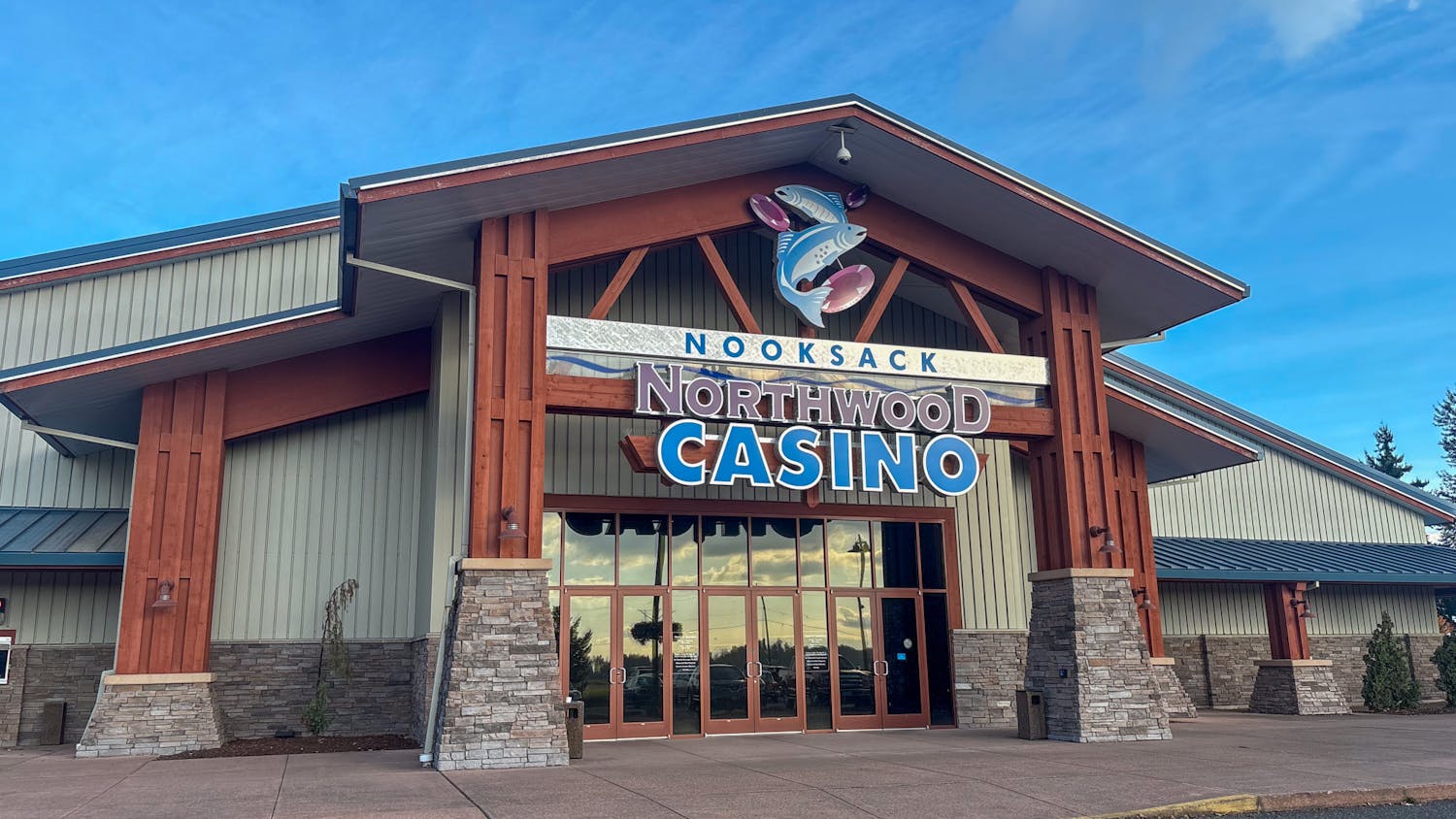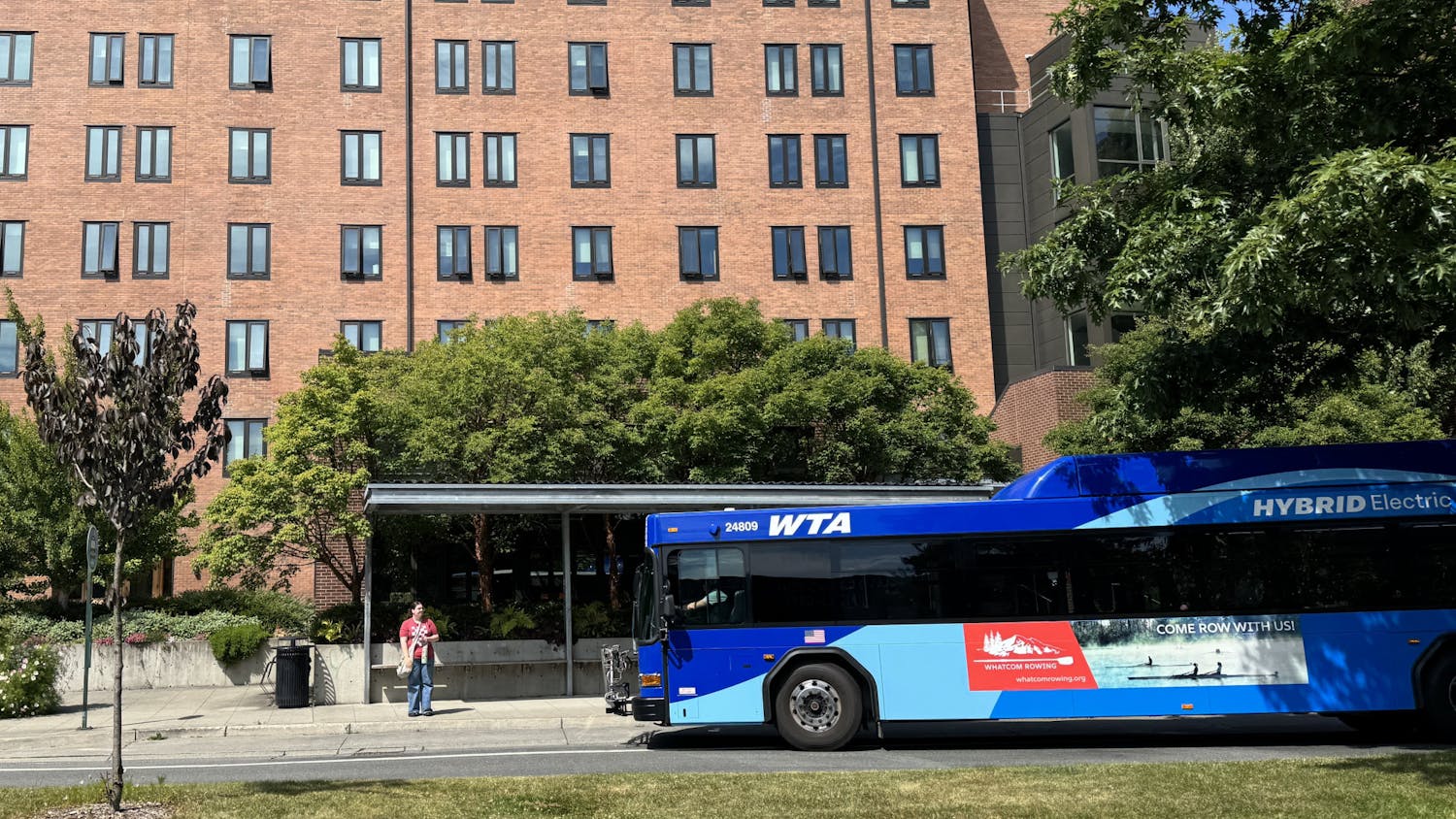Police call boxes are located around campus. // Photo by Audra Anderson By Audra Anderson Campus safety has been under scrutiny since the recent racist and homophobic vandalism incident in November 2018 that resulted in the expulsion of Shayne Robert Merwin in early December of the same year. Students are calling for more accountability from administration and University Police and better policies for handling incidents that break the student code of conduct. Fourth-year economics major Michelle Urrea was involved in the walk-out and sit-in which both took place in early December. As a member of the Latinx community, she said she felt targeted by the vandalism incident and distracted from school and work, leading her to fall behind in her studies and fear for her safety on campus. To Urrea, allowing Merwin to remain on campus and continue normally with his classes after being accused of a hate crime, felt like Western was protecting the accused instead of the hundreds of minority students affected by the incident, she said. “I’m not going to speak on behalf of everyone, but for me, the hardest part about how administration handled everything was [they] allowed him to continue to be in class and on campus after what he did,” Urrea said. “It was a hate crime.” Third-year human services major Gloria Guizar and her classmates organized the walk-out after speaking about the vandalism incident in her class, she said. Her professor cancelled the class plans for the day and told the students to get to work, so they did, Guizar said. “As a woman of color, I do not feel safe on this campus due to the fact that I have seen how this institution deals with hate crimes,” Guizar said. “I have seen the same cycles of hatred play out since my freshman year with no urgent response.” The administration and University Police want the students to recognize that safety around campus is a community effort, and that students have a lot of power in being 15,000 pairs of eyes, Director of Communications and Marketing Paul Cocke said. Assistant Chief of Police Keith Williams said students also have to understand the justice process and the need to protect everyone’s civil rights. “One thing that was a bit frustrating was a lot of people really wanted to see immediate justice right away, ‘heads will roll,’ that kind of thing,” Williams said. “In reality there’s a due process -- as the law sees fit -- making sure we have accurate information, conducting a thorough investigation, following what the prosecutor suggests. Those are things that, in the rush for justice, people may not really consider.” Marian Wolters, a third-year biology-anthropology major, said she understands everyone has the right to due process, but that a lot of students felt unsafe on campus while Merwin was under investigation. “There should have been more acknowledgement of the pain and some of the uneasiness about him being on campus,” Wolters said. Wolters said she also felt frustrated with the administration’s lack of transparency and limited engagement with students following the vandalism incident. Wolters, who also attended the sit-in, said she came away from the student forum with even more questions, particularly regarding how accessible the administration really is. Both Urrea and Wolters said they want to see a more ethnically-diverse administration who would be able to understand, sympathize and work effectively with students of color on campus. Wolters said she’d like to see more representation on campus in general. “Diversify the colleges, the professors, and have student input with that,” Wolters said. “We don’t want somebody speaking for us who doesn’t really know how we feel.” Urrea said the administration acts simply to check off the boxes when addressing an incident, not because they care for the well-being of students. If a similar incident happens in the future, students of color want to see the accused removed from campus while the investigation is underway, Urrea said. Meanwhile, Rasmussen emphasized the “see something, say something” mantra. If a student sees something that appears odd, Rasmussen said he wants them to feel like they have the power to say something to University Police or an authority figure. Urrea said many students, particularly students of color, do not feel safe or comfortable when talking to police. She also said that students had filed reports against Merwin in the dorms, but she saw no action taken by the administration then. “The president [and the administration] say ‘We hear you.’ You hearing us is not enough,” Urrea said. “If one of my friends on this campus who is [a person] of color is harmed, are they still going to ‘hear’ us at that point? Are they going to wait until someone is physically hurt?” Another suggestion by the administration and University Police was decreasing the frequency of tailgating on campus, Cocke said. Tailgating is holding the door open or allowing someone you don’t recognize into a locked building, like the dorms. Cocke said he understands the positive intentions students have behind allowing tailgating, but that it can jeopardize safety. Rasmussen said it’s difficult to decrease incidents perpetrated by one individual from happening in the future, but that University Police has been meeting with residence halls to discuss safety procedures. However, it is not just the safety procedures that students want to see changed, Urrea said. Students want to see the policies changed in a manner that protects and accounts for groups of students victimized by a crime, she said. Guizar also believes the problem lies in the policies, she said. “This university is not equitable because the policies in place are powered by prejudice,” Guizar said. “I don't expect everything to be perfect. Don’t feel guilty, instead take responsibility and start working to make this institution the one you promote.” University Police has been working closely with numerous departments around campus to complete a threat assessment following the incident, such as the Dean of Students office, the Human Resources office, the Student Health Center and the Office of University Residences, Rasmussen said. “[Our officers] are very committed to this place, this campus and these students,” Rasmussen said. “We feel that we are part of the community along with the students, faculty and staff. It’s not always easily seen that way by students, but it’s nonetheless real.” Rasmussen said he is proud of the work his team did, and that he felt the incident was resolved swiftly thanks to his officers and Western’s thorough communication system. Western messages students far more than other institutions of its size, Rasmussen said. He also said they have focus-tested different messaging systems with Western psychology professor David Sattler and his students. They have gone into classes to ask students how future communications could best reach them and to get different ideas, according to Rasmussen. Urrea said she would like to see an open-space after traumatic events where students can ask the administration questions, talk about the incident and get support. Wolters would have liked to see more cooperation from the administration with the Ethnic Student Center after an incident that affected the community so heavily, she said. Wolters also encouraged students of color to reach out to the Ethnic Student Center for community support. “Speaking as a junior who just found her place in the ESC, come here,” Wolters said, addressing students of color. “You’re going to find your voice and feel more empowered as a student.” Guizar said she felt empowered by the walk-out and sit-in, and she wants to thank the students who attended or supported events. “It was a privilege to put together the walk-out and sit-in, so that my peers could have a platform to have their voices heard,” Guizar said. “However, I hope that I never have to do it again.” Although University Police is proud of their efforts, Williams said there is always room for improvement. “I look forward to more engagement with the students,” Williams said. “So often we’re asked ‘how can we improve the relationship’ or some people don’t trust the police or don’t feel like we have their best interests at heart, and I think we really have to break that paradigm.” Cocke said any incidents of hatred, whether it be the vandalism incident or the damage done to the Jewish section of the library, are disgusting and intolerable. “The whole point of universities is to educate and to advance knowledge and to discuss how as a society we can be better,” Cocke said. “Those kinds of messages of hatred are the worst side of human nature.” One sentiment the administration, University Police and students all share is their aversion to the vandalism and the student who did it, but each group has a different solution to the incident that unfolded last November. “This is not unique to Western,” Rasmussen said. “These kinds of folks are coming out because it’s been made permissible for them to come back out into the sunlight … but when [these things] happen here, we want to act quickly to stop them.” Students, on the other hand, want to see policies revised that protect the accused, as well as absolute transparency and accountability from the administration, Urrea said. “Either change your policy, or we’re going to be in your office,” Urrea said. “It all comes down to [the administration] showing that we matter, and that we’re important and that we’re not neglected.”





